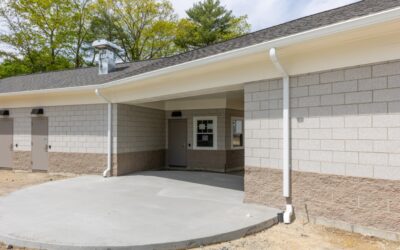The office renovation process is not one to take lightly. If you’re interested in creating a new office space with a renovation project, keep reading!
In the dynamic mosaic of the modern business landscape, our physical spaces act as a canvas, reflecting the ethos and aspirations of our enterprises.
The Office Renovation sector, particularly, is pulsating with novel strategies, seamlessly blending cutting-edge design, sustainability, and adaptability. With a surge of new paradigms taking root, property developers are steering a delicate dance between innovation and practicality.
This guide is an unearthing of the trenchant forces driving today’s office-space metamorphosis. We’ll deep dive into renovation trends that not only reshape the four walls but redefine workflows.
The blog further unravels the intricacies of the renovation process, unfurling a structured blueprint on cost-efficiency and stakeholder synergy.
Trends in Office Renovation
The winds of change seldom relent in the sphere of workspace design. Recent years bear witness to a seismic shift from traditional, compartmentalized layouts to expanses that foster collaboration and wellbeing.
Recent studies spotlight the pivotal role of office ambiance in productivity, retention, and brand articulation.
Here are some of the most influential trends that are saturating the office renovation space:
Flexible Workspaces: Agile working environments have snatched the spotlight from rigid spaces. It’s not just about open layouts, but also about modularity—spaces that can transition from solitary to congregation areas with the swish of a partition.
Sustainable Practices: The green brigade has landscaped its way into the office arena. Renovations are harnessing eco-friendly materials, energy-efficient fixtures, and designs that nurture a symbiosis with the environment.
Integrating Technology: The digital revolution has steered the amplitude of office renovation, with a particular focus on integrating high-tech amenities. From IoT solutions that streamline operations to augmented reality workstations, technology is becoming an integral thread in the design narrative.
Different Types of Office Renovations
When contemplating an overhaul of office spaces, it’s pivotal to recognize the spectrum of renovation types, each tailored to specific goals and requirements.
Below are the key categories:
Cosmetic Renovations: These involve superficial updates that breathe new life into the workplace without altering its fundamental layout. Paint, lighting upgrades, and modern office furniture fall under this category, making it a budget-friendly option to refresh and invigorate the existing space.
Structural Renovations: This type dives deeper, modifying the physical structure of the office design. It can include tearing down walls to create open spaces, adding new rooms, or even modifying the building’s facade. Structural renovations require a significant investment but can dramatically enhance functionality and aesthetic appeal. If the office area needs more room, and your renovation goals are too large for just new furniture, this might be the type of renovation project you need!
Sustainability Upgrades: Focused on reducing environmental impact, these renovations incorporate eco-friendly materials, renewable energy sources, and green building standards. Though they may involve a considerable initial outlay, sustainability upgrades often lead to long-term savings and bolster a company’s eco-conscious image. Relevant stakeholders might also be interested in investing more into the space, if it is becoming sustainable.
Technology Integration: Modernizing an office to keep pace with digital advancements encompasses this renovation type. It involves implementing smart systems for lighting and heating, high-speed internet infrastructure, and innovative tech solutions that optimize productivity and foster a cutting-edge work environment. These improvements are essential for the modern world.
Each renovation type offers unique benefits and challenges, and the choice among them should align with the company’s vision, budget, and the desired impact on employees and clientele.
The Renovation Process
The renovation catalyst is often a nuanced weave of functional demands, aesthetic aspirations, and financial parameters.
Here’s a structured plan to chisel your vision into reality:
Define the Goalposts
Before donning the proverbial hard hat, articulate the endgame. Why renovate? Is it to attract new tenants, improve employee morale, or align with emerging industry standards? Clarity here serves as a compass for the entire project.
Engage the Right Team
Top on the checklist is assembling a team—a coalition of architects, interior designers, general contractors, and stakeholders intertwined with a shared vision. If you’re looking for a trusted construction company to take the reins on an office renovation and need a full project management team, reach out to us at South Coast Improvement Company. Our competent team can handle everything from the project plan, to the renovating, to the finishing touches!
Budgeting and Scheduling
Nothing plagues a project more than a runaway budget or timeline snags. Careful budgeting, including a contingency fund, and realistic scheduling can avert last-minute shocks. Also considering top priorities during the office renovation project, can be a way to save money in the long run.
Conduct Due Diligence
A thorough inspection can unveil structural red flags that may not land on blueprints. Pivoting to accommodate these early findings can smoothen later stages.
Materialize the Design
The point where vision becomes tangible is pivotal. Here, prioritize materials and layouts that align with your goals and are cost-efficient in the long run. If you’re looking for more space and to make each square foot count, this can be expensive. But consider the costs in the long run of a more open floor plan.
Communication is Key
Transparency with all involved is non-negotiable. Regular updates and clear communication can preempt disruptions and align expectations.
Post-Construction Review
After the last nail is hammered, evaluation is imperative. Does the renovated space resonate with the initial goals? Solicit feedback from tenants and stakeholders, and infuse it back into the process for the next renovation cycle.
Cost Analysis
To demystify the financial labyrinth, we dissect the probable costs and highlight budgeting best practices:
Understanding the Breakdown
A renovation budget is a composite of several moving parts—material costs, labor, design fees, permits, and unforeseen expenses. Each merits a critical eye to avoid hemorrhaging resources.
Prioritizing Costs
What’s non-negotiable and what’s in the realm of flexibility? Drafting a cost hierarchy can guide decisions during the project.
Return on Investment (ROI)
The upfront costs of a renovation can be daunting, but an ROI analysis can unveil the long-term value. A well-designed, functional space can command premium rents and foster tenant satisfaction, translating into substantial returns.
Navigating the Unforeseen
Contingency planning is akin to an insurance policy for your budget. Allocating a buffer for unforeseen expenses can soften the blow of hidden costs.
How Often Should Office Renovations Happen
The frequency of office renovations isn’t etched in stone. It’s a flux that bends to the arc of business growth, technological evolution, and workplace culture.
Market Dynamics
Are industry standards undergoing a tectonic shift? Renovations are often battle cries in the competitive market terrain.
Wear and Tear
Physical wear reflects operational wear. Timely revamps can both restore and rejuvenate a space.
Employee Feedback
Listening to your most crucial assets—your employees—can often be the litmus test for necessary renovations. A workspace that resonates with its inhabitants is poised for success. When your employees feel like the offices at work are more like “home offices”, they’re more likely to be productive.
Future-Proofing
A renovation with an eye on the future fares far better than one that appeases the present. Incorporating elements that are adaptable and scalable can elongate the life cycle of an office space.
Modular Designs
Demountable partitions, flexible layouts, and furniture systems herald a space that can evolve in tandem with the business.
Technology-Agnostic Spaces
Spaces designed to accommodate emerging tech trends without structural upheaval is a prudent investment in the long run.
Sustainability
An office that transcends eco-friendly buzzwords to embody a sustainable practice is not only a responsible corporate citizen but a cost-effective one as well.
Reasons For Regular Office Renovations
The ‘why’ behind office renovations is elemental. Be it rebranding, mergers, or a paradigm shift in company culture—every surge of change demands a reflection in our workspace.
Maintaining Relevance
Outdated offices echo with the footsteps of a bygone era. Regular facelifts allow companies to stay in sync with contemporary work preferences and practices.
Employee Engagement
A vibrant, upgraded space isn’t just an aesthetic nicety; it’s a magnetic hub for talent retention and employee engagement.
Evolving Technology
Offices that don’t keep pace with digital nuances risk operational inefficiencies. Regular renovations offer a tech-savvy edge that’s increasingly pivotal in business today.
Recap | An Office Renovation Can Create A New Space
In summary, office renovations serve as crucial milestones in the evolution of any business, blending the aesthetics of the workspace with functionality and forward-thinking design.
From setting clear objectives, selecting a cohesive team, meticulous budgeting, and scheduling, to executing a design that marries form with function, and ensuring open lines of communication throughout the project—each step is pivotal.
The process doesn’t end with construction; post-renovation reviews and adaptations based on feedback are essential for continuous improvement.
Financial planning, understanding the frequency of renovations, future-proofing through adaptable and sustainable practices, and recognizing the multi-dimensional benefits of renovations—including employee engagement and staying abreast of technology—are fundamental components in this transformative cycle.
Regular office renovations, driven by strategic intent and executed with precision, not only echo a company’s dynamism but also project its commitment to excellence and employee well-being into the future.
View Our Work
The Overlook – Masonic Health System
"We’re honored to have partnered with The Overlook on this transformative initiative. Our team brought specialized expertise in working within occupied senior living communities, delivering a seamless renovation that aligns with The Overlook’s exceptional standards of...
Hamilton Wenham
Their team was collaborative, responsive, and committed to our shared vision for this space, -Eric Tracy Superintendent, Hamilton-Wenham Regional School District We partnered with the Hamilton-Wenham Regional School District to deliver a brand-new athletic building...














